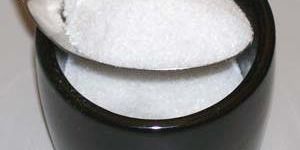Cell & Molecular Biology
Weight Loss and Fat-Burning Mechanisms
JAN 30, 2014 12:00 AM PST
Share
New Atomic Layer Catalyst for Cleaner Hydrogen Production
 Hydrogen has been proposed as a greener fuel for automobiles of the future, among other novel uses. However, the lack of an inexpensive method of generating hydrogen has held back development of mass produced hydrogen-powered devices. Currently, hydrogen is commercially produced via hydrocarbon processing paths, which do not produce a net positive impact on the environment.
Hydrogen has been proposed as a greener fuel for automobiles of the future, among other novel uses. However, the lack of an inexpensive method of generating hydrogen has held back development of mass produced hydrogen-powered devices. Currently, hydrogen is commercially produced via hydrocarbon processing paths, which do not produce a net positive impact on the environment.To attain a cleaner source of hydrogen, for years researchers have been working on variations of hydrogen production through solar-powered splitting of water - using solar power to generate electricity, and in turn using that electricity to remove the hydrogen from water. These paths rely on costly platinum catalysts, making the scale-up economics unfavorable for larger scale production.
A group of researchers from North Carolina State University may have solved this problem through their research into alternate catalysts. They found Molybdenum Sulfide (MoS2) to be an effective catalyst, but only at very low thicknesses, with a single atomic layer of less than 1 nanometer being preferential. The work was published online in the recent edition of Nano Letters.
For years, scientists have thought that the catalytic effect took place primarily on the edges of catalysts, and therefore that thicker catalyst layers are more efficient. Extremely thin films were expected to have little catalytic effect, if any. The team discovered that the conductivity of the thinner MoS2 films were a dominant mechanism - with thinner layers having greater conductivity, the catalytic effect was improved. Adding another layer of MoS2 atoms to the catalyst layer decreased catalytic performance by a factor of almost five.
Aside from just using less material, there are multiple potential advantages to the MoS2 catalyst approach. MoS2 can do double duty in a solar water splitting device, since it is capable of both absorbing the proper wavelengths of light and performing the catalyst function. (Typically different materials are required for each function.) MoS2 also has a near perfect bandgap for solar water splitting applications, approximately 1.8 eV (electron-Volts). MoS2 is also a more common and less expensive material than platinum.
There are still performance and scale-up issues to consider. It isn't known whether these films can reliably reach the same efficiency as platinum catalysts, especially on larger scale. Also, the economics of preparing consistently reliable monolayer films at larger scales has to be explored. These monolayers are applied by a CVD (Chemical Vapor Deposition) process, requiring a larger deposition chamber to process larger areas. The group at North Carolina State already has capability of producing high quality monolayer films up to the centimeter scale, which is an important step in the process.
This work is notable for two reasons-the potential for breakthroughs in clean generation of hydrogen fuels, and for shaking up the conventional wisdom in catalyst theory. It's possible that by rethinking the potential for atomic-layer catalysts, scientists will be able to apply this concept in other fields and provide a cascading set of breakthroughs. Meanwhile, the North Carolina State team is turning their attention toward a solar water-splitting system using their new catalyst discovery. Let's all wish them good luck in their efforts.
You May Also Like
Loading Comments...








